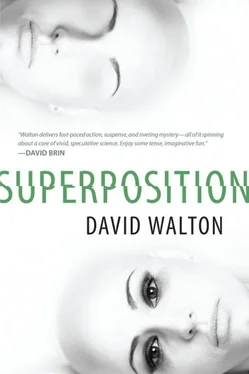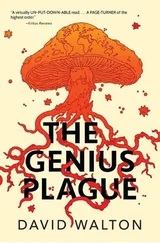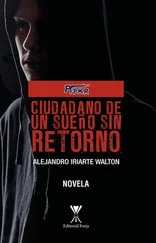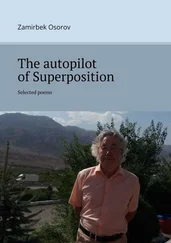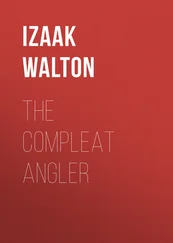“Looks like you were right,” Terry said. “They did originally act on the basis of a tip. Unfortunately, that fact is not obviously significant to the case, which hangs more on forensic evidence than on eyewitness testimony. If the police had found the tipster, that might just mean they would have one more person to speak against you.”
“But who was it?”
“We don’t know,” said Bill, who looked a little like Terry, but without the mustache. I wondered if they were related. “She didn’t leave a name, and the call was traced back to a pay phone at the Lakehurst Diner Restaurant.”
“She?” I asked, remembering Peyton’s ghost.
“Yes, it was a female caller,” Terry said.
“When did this call come in?”
“2:07 PM. After you found Vanderhall’s body, but before the New Jersey cops connected with the Media cops. Probably about the time you were down in that bunker.”
“Well, can I hear it?” I asked.
“Hear what?”
“The recording of the call.”
“Not much to it,” Bill said. He pulled his phone out of his pocket and pressed a few buttons. A female voice spoke out of it.
“Yes, I’m calling with information about a murder.”
“Can I have your name, please?” asked another female voice.
“It’s about Dr. Vanderhall. He was killed last night, and I saw who did it.”
“Let’s start with your name, please,” the voice said calmly.
“Don’t you want to know who the murderer is?” the caller asked.
“I’d like to know who you are. If you’re afraid, we can protect you, but we can’t protect you if we don’t know who you are.”
“It was Jacob Kelley. He was the murderer.”
“We will certainly look into that. Now, can you tell me your name?”
Bill shut off the recording. “The caller hung up after that. Not much to go on, except that she fingered you for the crime. So it’s probably someone who knows you.”
“I know who she is,” I said dully.
“You recognized the voice?”
“As soon as she spoke,” I said. “Didn’t you recognize it?”
Terry bit his lip and slowly shook his head. “No… though it sounds a bit familiar.”
“It’s Jean Massey,” I said. “Jean Massey is the murderer.”
UP-SPIN
The blackness swirled, lighter blacks competing with the darker ones. I couldn’t feel any part of my body, but I was still conscious. As my vision cleared, I could see sparks in the darkness, not like stars, which were always far away, but more like fireflies. They were white, tiny, and moved quickly, blinking off and back on again. I tried to track the movement of one, but found that I couldn’t. What were they?
The more I watched, the more I could sense there was a pattern to the movement, and I thought I could discern some meaning in it. Colors. Texture. Temperature.
The constant motion was making me feel sick. I tried to close my eyes, but I found that closing them didn’t make any difference to what I could see. The motion seemed to intensify. The more I watched, the deeper I could see into the cloud of lights, and now I was watching millions or even billions of them. Not only that, but I could see forward and backward in time, as well. I saw that each light was not eternal, but had a lifetime, interacting with other lights, altering their shape and their purpose. In fact—and this came like a jolt of new sight, a pattern coming into focus—the whole constellation of lights was connected. It was a single system.
As soon as I realized that, I saw that this system of lights was just one of many, and that each system had its own span of existence through time. The systems interacted with each other, trading millions of lights among them, composed of different sets of lights from one moment to the next, but still tracing out a continuous path as a single system.
Was this how the varcolac saw the world? What were these systems I was seeing? Humans? The varcolacs themselves? Or were these only the beginnings of more complex ideas? Perhaps the systems I was now perceiving were only cells or bacteria. As this thought occurred to me, my sight leapt to the next level of complexity, and I saw systems of systems, each composed of trillions upon trillions of lights, and I knew that I had not even come close to the end. The concept now in place, my vision jumped back, and back, and back again, perceiving each departure as a new combination of particles, all intertwined, all shared and traded, yet somehow distinct.
Finally, I opened my eyes. At first, I thought I was simply viewing the next level of complexity, the systems upon systems, and I suppose I was. But there was something hard and cold against my face. I had hands again, and legs. I was back in the real world, at least as I understood it. My face was pressed against a concrete floor, and I could see the pebbly, sand-colored surface, feel the rough texture on my cheek and forehead. There was light coming from somewhere above me, and a persistent buzzing sound, like a high-voltage electric fence.
I lifted my head and looked around. I was still underground, somewhere in the accelerator ring structure. It was an enormous, dimly lit, concrete room, and I recognized it. It was a sub-basement below the collider ring, an access room for the electric power coming into the collider from the grid. Thick bundles of cable stretched across the floor, running in different directions and across each other. The bundle that ran right in front of me was thicker than my leg and a riot of different colors, all twisted together. Near the walls, the bundles converged, forming super-bundles that passed into conduit pipes. Banks of switches covered one of the walls, out of reach.
All of the crisscrossing bundles of wire divided the floor into spaces of different shapes and sizes, like a skewed chess board. In many of these spaces were people, one person to a space, lying asleep or unconscious. To my right, I saw Marek and Alex, each in their own spaces. To my left were four more people, the sight of whom made my breathing quicken and my heart rate spike. It was my family—Sean, Claire, Alessandra, and Elena, lying there as if they’d just gone to sleep for the night. None of them was moving, but I could see their chests rise and fall with each breath. They were alive.
DOWN-SPIN
I paced my prison cell, drawing irritated looks from my cellmate. I had to get out. The next day, a jury of my peers would pronounce their verdict, and the more I sat around in prison, the more convinced I was that the verdict was going to be guilty. I was pretty certain I knew who the real murderer was, but it was too late to prove it to anyone—at least, not until a lengthy appeal process—and in the meantime, Jacob was out there somewhere, trusting her.
Why had she done it? I had no idea. Money? Power? Fame? All of those were possible, if she could have controlled the technology Brian had discovered. It promised a solution to one of the first dreams of science: unlimited energy. And that was only the least of it. What might one do with a device that could alter the Higgs field? Control the random probabilities of the universe? There was evidence that quantum fields stretched through time as well as space… could one undo a bad decision? Unexplode a terrorist bomb? It would change the world.
It seemed likely that Jean had been Brian’s newest girlfriend, and I suspected she had been involved in the science all along. She had probably written a lot of the subroutines that interacted with the Higgs projector’s core module. I didn’t know how she had killed him, exactly, but given what I did know, I could imagine how she might have done it. I knew the varcolac could appear and disappear at will. He wasn’t human, of course, but it demonstrated a basic truth about matter: it wasn’t as solid and real as it appeared to be to us. Mass itself was a quantum property, delivered to a particle via the Higgs field the same way a magnetic field could deliver an electric charge. If you could manipulate the local Higgs field with enough precision you could walk through walls, change your weight, possibly even reverse gravity. If Jean could do those things, it would have been easy for her to shoot Brian and then escape the locked room. Though she also might have had the skill to hack the logs and frame me.
Читать дальше
